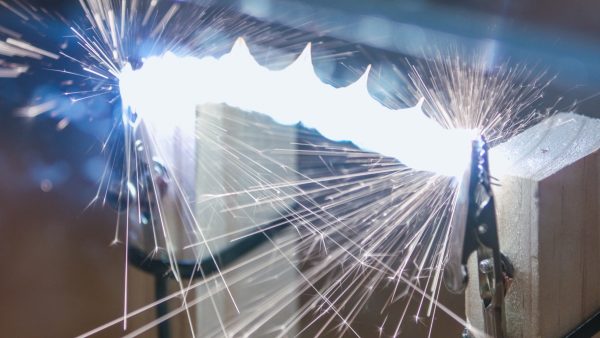Insulator Definition
An insulator is a material that electricity cannot easily flow through. For example, plastic coating on wires stops electricity transfer.
View Lesson on Electricity & Circuits
Become a member to get full access to our entire library of learning videos, reading material, quiz games, simple DIY activities & more.
Become a member to get full access to our entire library of learning videos, quiz games, & more.
Plans & Pricingto watch this full video.

Access All Videos
and Lessons, No Limits.
Access All Videos

No credit card required,
takes 7 sec to signup.
No card required

Ready-to-go lessons
that save you time.
Ready-to-go lessons
If you are on a school computer or network, ask your tech person to whitelist these URLs:
*.wistia.com, fast.wistia.com, fast.wistia.net, embedwistia-a.akamaihd.net
Sometimes a simple refresh solves this issue. If you need further help, contact us.
Electricity & Circuits
Fun Facts
- Wood, rubber, and glass are examples of insulators.
- Wires in electronic devices are usually wrapped in a plastic insulator to prevent the energy from being transferred.
- Insulators could be put around power lines to prevent birds and other animals from being shocked.
Why Do We Need To Know About Insulator
Learning about insulators helps you understand how they keep us safe and why they’re important for things like kitchen appliances. For example, the plastic on electric wires stops you from getting shocked, showing how insulators are used to keep electricity under control.
This is really useful for jobs in electrical engineering. Engineers use this knowledge to make all sorts of things, from electric cars to artificial limbs, proving how insulators are key in lots of modern inventions that help people.
Frequently Asked Questions
Check out the Full Lesson on Electricity & Circuits
In this lesson, we learn that:
- Electricity is the flow of electrical energy from one place to another.
- Electricity flows through conductors, but it cannot flow through insulators.
- A closed circuit is needed for electricity to flow and power our electronics.
Related Topics
- Batteries Definition
- Body Fossils Definition
- Circuit Definition
- Climate Definition
- Computer Programming Definition
- Conduction Definition
- Conductor Definition
- Convection Definition
- Decomposer Definition
- Definition Of Experiment
- Definition Of Shade
- Digestive System Definition
- Ecosphere Definition
- Electricity Definition
- Electromagnetic Spectrum Definition
- Gas Definition
- Geologic Time Scale Definition
- Glacier Definition
- Greenhouse Gases Definition
- Heat Definition
- Hydrosphere Definition
- Inherited Traits Definition
- Insulator Definition
- Kinetic Energy Definition
- Landslide Definition
- Light Year Definition
- Limited Resource Definition
- Marsupial Definition
- Mitochondria Definition
- Newton’s 3rd Law Of Motion Definition
- Offspring Definition
- Particle Model Of Matter Definition
- Pattern Definition
- Period Definition
- Property Definition
- Reflecting Surface Definition
- Sedimentary Rock Definition
- Smelling Definition
- Snow Definition
- Soil Erosion Definition
- Solubility Definition
- Sound Wave Definition
- Taxonomy Definition
- Tissue Definition
- Volts Definition
- Water Cycle Definition
- Water Definition
- Watershed Definition
Start a Free Trial Today. Get a $5 Amazon Gift Card!
Teachers! Start a free trial & we'll send your gift card within 1 day. Only cards left. Try it now.
Select Grade
Select Subject
This email is associated with a Science Kit subscription. Kit subscriptions are managed on this separate page: Manage Subscription

-
Download InvoiceScience & Math$/yr
-
Download InvoiceScience Only$/yr

access all lessons
• No credit card required •
"My students loved the videos. I started the video subscription in May and used them as a review before the state test, which I know contributed to 100% of my class passing the state test."
Rhonda Fox 4th Grade Teacher, Ocala, Florida
Use Generation Genius in Your School
Access all lessons free for 30 days.
"My students loved the videos. I started the video subscription in May and used them as a review before the state test, which I know contributed to 100% of my class passing the state test."
Rhonda Fox 4th Grade Teacher, Ocala, Florida
• No credit card required •
Already a member? Sign In
* no credit card required *

* no credit card required *
* no credit card required *


to Discover the Benefits of Generation Genius
Learn How to Save for Your School & District!

no credit card required
Skip, I will use a 3 day free trial
Enjoy your free 30 days trial
-
Unlimited access to our full library
of videos & lessons for grades K-5. -
You won’t be billed unless you keep your
account open past your 14-day free trial. -
You can cancel anytime in 1 click on the
manage account page or by emailing us.
-
Unlimited access to our full library of videos & lessons for grades K-5.
-
You won't be billed unless you keep your account open past 14 days.
-
You can cancel anytime in 1-click on the manage account page.
Cancel anytime in 1-click on the manage account page before the trial ends and you won't be charged.
Otherwise you will pay just $10 CAD/month for the service as long as your account is open.
Cancel anytime on the manage account page in 1-click and you won't be charged.
Otherwise you will pay $10 CAD/month for the service as long as your account is open.
We just sent you a confirmation email. Enjoy!
DoneWe use cookies to make your experience with this site better. By using this site you agree to our use of cookies. Click "Decline" to delete and block any non-essential cookies for this site on this specific property, device, and browser. Please read our privacy policy for more information on the cookies we use.Learn More
We use cookies to improve your experience. By using this site, you agree to our use of cookies. Click "Decline" to block non-essential cookies. See our privacy policy for details.Learn More




























































































































